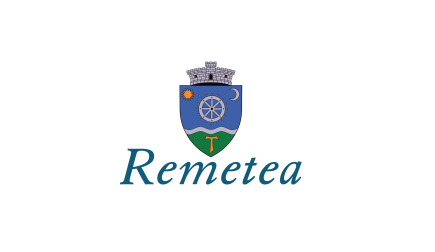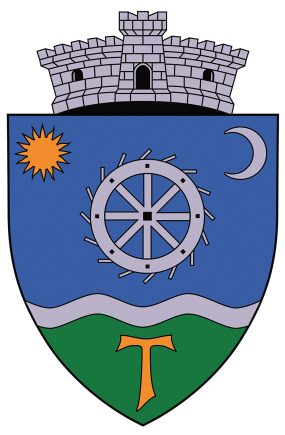The first cinema
In December 1913 the first film screening took place in Remetea. A Budapest motion-picture company screened the film Paris in Flames for several days in the Mélik house. Every evening the house was full.
In July 1902 the first volunteer fire brigade was formed in Remetea. Its initiator was Géza Kénossy, who was then the municipal clerk. On that occasion the Remetea Youth Association organised a dance evening and donated the proceeds to the fire brigade.
Curiosity
In September 1908 an Italian engineer working on the railway was beaten in Gyergyószentmiklós. In the police statement of one of the young men involved it reads: “...his head was almost as hard as a man from Remetea’s.”
For centuries the timber-floating on the Mureș (Maros) river was dangerous not only because of accidents but also because of the arbitrary behaviour of the manor-lords of the valley.
Illiteracy course
In January–February 1909 director Lajos Borka organised an illiteracy course for adults who could not read or write at the school in Csutakfalva. The 46 enrollees received alphabet primers and stationery from the National Council for Popular Education (Országos Közművelődési Tanács). Lessons were held three evenings a week, from 6 to 9 pm.
Exams took place in early March in the presence of Dr. István Balló, the Royal Hungarian school inspector. All 46 successful candidates received official certificates and prize books.
THE BELL WAR
Until 1914 the parish church had four bells. During the First World War only one bell remained — the large bell weighing 621 kg. Therefore Pastor Dénes Kis brought the small bell from Kicsibükk to serve as a soul-bell beside the large bell.
In 1918 a military regulation stipulated that only one bell could remain at a location. To prevent the large bell being taken away, the small bell was moved to Csutakfalva — to the great outrage of the people of Kicsibükk. They demanded its return, but the Csutakfalva residents remained stubborn; mutual threats even followed. Eventually, under pressure from the church council, the Csutakfalva people pooled money and bought a bell which Pastor János Hollanda blessed on the basis of episcopal permit no. 1112.
The Kicsibükk people thus regained their rightful property and peace was restored.
Kuruc rebellion commemoration
In the summer of 1903 the Remetea Civic Reading Circle organised a Rákóczi memorial event — a “kuruc rising” — on the 200th anniversary of the uprising led by Francis II Rákóczi.
In the war of 1703–1711, 50 people from Remetea took part (their names are known) and four fell: Ferenc Nagy, Mihály Ivácson, János Laczkó and István Fazakas.
The first war casualties
Ninety-three years ago — in the autumn of 1915 — shocking news arrived in our village: the first men from Remetea had fallen on the Eastern Front (Galicia) in the First World War. The generation born at the beginning of the 20th century (the ‘20–40s generation’) knew the war only by hearsay.
They had no idea of the horrors of war. In September 1914 the Remetea men departing for the front danced the csárdás in groups in the centre and at the Ditro railway station, shouting “Long live the war!” and “We will pay Russia back for ’48!” They cheered every officer and uniformed man; they sang foolish patriotic songs from train windows, accompanied by girls in hussar caps: “Stop, dog Serbia, Bosnia will never be yours.” It was as if possession of Bosnia had become a life-necessity for the Seklers.
Less than a year later the tragic news began to arrive. In September Péter Borbély, Ferenc György, Jenő Kábdebó, Ferenc Madarász, András László and Zoltán Balázs died. In October, in southern Galicia, István Portik-Hegyi, Ferenc Petréd, András Portik and József Brassai fell. In November József Baláz Csíki, Mihály Balázs (who left eight orphans), István László (listed twice), János Laczkó, Gergely Laczkó and István Nagy died. The four-year war claimed about 177 lives from Remetea.
Church painting
In November 1928 the Remetea church council, with the approval of the Gyulafehérvár bishopric, announced a competition for five large murals: Saint Teresa; Jesus on the Mount of Olives; Saint Peter receiving the keys from Jesus; the Holy Family; and the Coronation of Mary.
Painters from several towns entered: Ferenc Szabó and Gáspár Fábián from Cluj, Ferenc Herczeg and Mózes Sándori from Târgu Mureș, and Gyula Hermann from Odorheiu Secuiesc. The competition was won by Ferenc Herczeg, who painted the five murals for 156,960 lei. Today only the Coronation of Mary is still visible. The artists used 22-carat gold leaf. More than half of the payment for the paintings was supplied by the Alkoza co-commonality (50,000 lei) and the Remetea Credit Cooperative (31,000 lei).
Natural disasters
Among the major natural disasters that hit Remetea the event of 1866 is significant, when a late spring frost followed by a drought that lasted the whole summer destroyed the entire harvest. The following year, 1867, produced an unusually abundant crop.
On 30 August 1913 heavy rains swelled the Kőpatak stream and destroyed 194 buildings belonging to 116 families in Csutakfalva, Rétalja and the centre, sweeping away fences and bridges too.
In the first days of April 1932 the Mureș flood reached proportions not seen in living memory in Remetea. The flood extended toward Ditró as far as the railway embankment. That summer was followed by a massive locust invasion. The swarms ate every green plant along the village’s west and north borders on the Hegyesbükk–Eszenyőbükk–Eszenyő–Martonka line. The efforts of the entire population, organized by the local authorities to exterminate the locusts, proved futile.
Plague
Among the 19th-century natural disasters I already mentioned, the great plague epidemic of 1716–1718 surpassed them all. Its devastation can be illustrated with the following figures:
| Locality | Died | Remained |
| Gyergyószentmiklós | 713 | 904 |
| Tekerőpatak, Kilyénfalva, Szárhegy | 364 | 673 |
| Alfalu, Csomafalva | 380 | 1002 |
| Ditró, Remete | 668 | 930 |
| Újfalu | 474 | 480 |
The situation was worsened by a government-ordered quarantine: wheat supplies from the Maros seat stopped, fruit deliveries from the Udvarhely seat were halted, and shipments of acorns for animal fodder were suspended — together with the most important source of income, rafting. All this in 1718–1719 caused terrible hunger among the population that had survived the plague.
Events of the 1950s
-
Alongside the milk-powder factory built in 1952–54, a significant achievement was the construction of an industrial mill in the Mélik house yard. Work began on it in March 1956 and trial grinding took place in early August 1957. It was officially inaugurated on 22 August 1957.
-
In 1954–55 the Mureș bridge was rebuilt.
-
Between July and September 1958 the fire station building was erected.
-
During the presidency of Bálint Laczkó (1958–1989) four concrete bridges were built in Csutakfalva and 480 metres of the Kőpataka streambed were reinforced and regulated.
-
In 1959 the water pipeline between the milk powder factory and the Nagyrét well began to be built.

